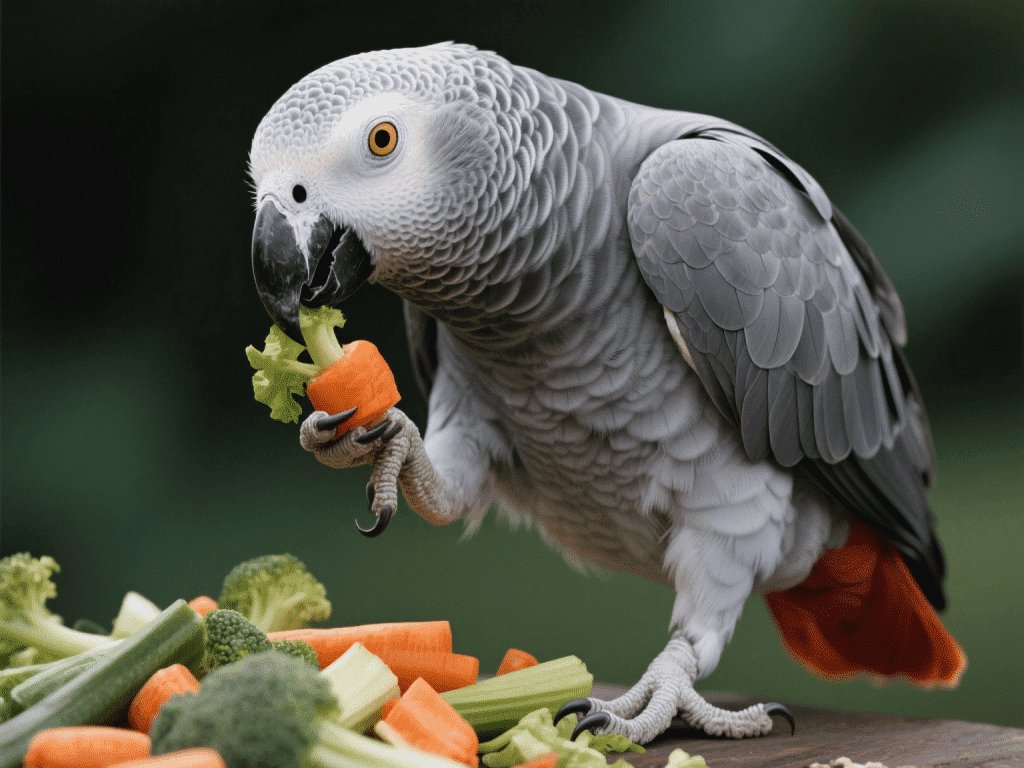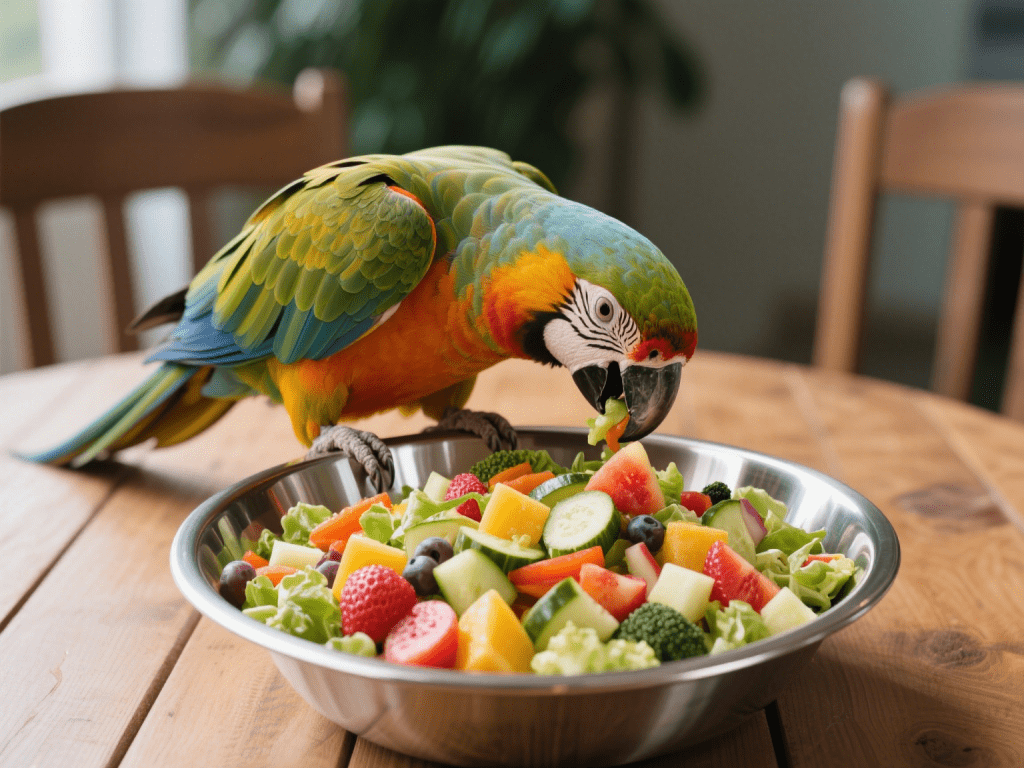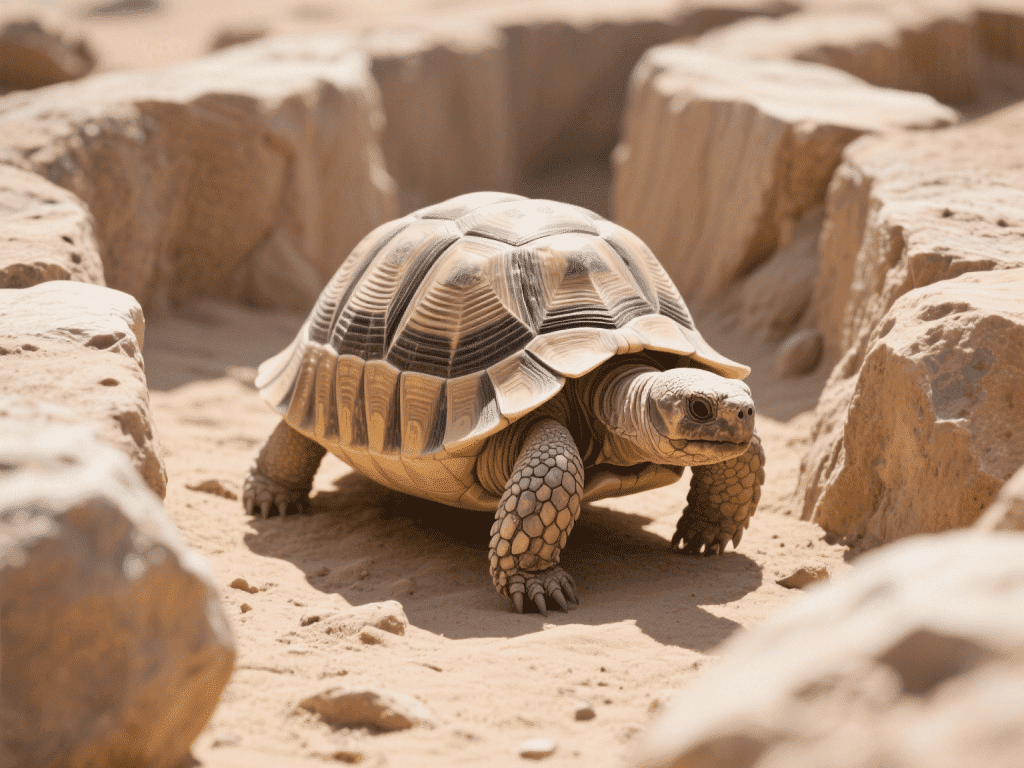
Few avian species match the intelligence of the African Grey—yet without precise nutrition, they’re prone to deficiencies and behavioral issues. Drawing on 15 years of avian dietary research, this blueprint ensures your Grey thrives.
1. Balanced Pellet Foundation
High‑quality, formulated pellets should constitute 60–70% of the diet. Look for brands with at least 18% protein and enriched with vitamins A, D₃, E, and selenium.
2. Fresh Produce Rotation
Offer 20–25% fresh veggies and fruits daily. Rotate dark leafy greens (kale, collard greens), colorful peppers, and berries to provide antioxidants and trace minerals.
3. Limited Seed and Nut Treats
Seeds and nuts are high‑fat treats—reserve for 5–10% of dietary intake. Choose unsalted, raw almonds, walnuts, and sunflower seeds as occasional rewards.
4. Calcium and Vitamin D₃ Support
African Greys need robust calcium levels to prevent hypocalcemia. Provide cuttlebone, mineral blocks, and safe sun‑lamp exposure (full‑spectrum UVA/B) for vitamin D₃ synthesis.
5. Hydration Matters
Change water twice daily; consider offering filtered or spring water. Some Greys enjoy a shallow dish for light misting baths, which encourage feather health and hydration.
6. Monitoring Weight and Condition
Weekly weigh‑ins on a kitchen scale reveal subtle weight changes. A healthy adult African Grey weighs 400–550 g, with a well‑defined keel.
7. Foraging and Mealtime Enrichment
Use puzzle feeders and paper‑wrapped vegetable bundles to promote natural foraging behaviors, reducing boredom‑related screaming.
8. Seasonal Adjustments and Senior Care
During molting, increase protein to 20% temporarily. For seniors (15+ years), introduce easily digestible foods like lightly steamed carrot slices and softer pellets.










